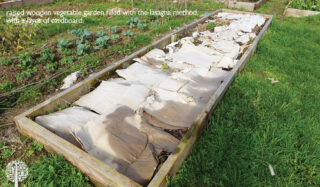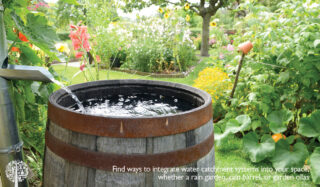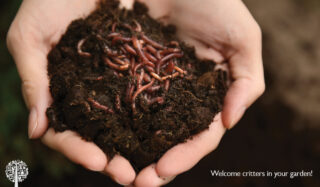There’s a lot of buzz about regenerative gardening these days, and for good reason. After all, regenerative gardening techniques help heal the planet by building healthy soil and conserving natural resources like water and energy. The regenerative gardener never uses chemicals and works exclusively with nature to create a low-maintenance, sustainable ecosystem that offers harvests and wildlife habitats. You’ll find yourself craving time in your garden and learn that if you were to walk away from it, the garden would continue to thrive and regenerate without you, like a forest.
So, are you ready to become a regenerative grower? There’s nothing overly complicated about it; there are easy, practical steps you can take immediately to get started.
Low-Mow Lawns, Lasagna Gardens, and Hugelkultur
Saying goodbye to chemical sprays is the first thing you can do. After that, observe your space and consider different actions you can take. Do you have sections of lawn you can replace with wildflowers or low-mow alternatives? Can you build soil by creating a lasagna garden or hugelkultur mound? These two options use easy-to-find organic materials and can even be applied to containers! They act like sponges and retain moisture, reducing the need for watering as your plants grow.

Conserving Natural Resources
Find ways to integrate water catchment systems into your space, whether a rain garden, rain barrel, or garden ollas. Make use of rock walls, concrete spaces, or the exterior walls of your home that retain warmth and place heat-loving crops close by.

Boost Soil Health
Amend soil with compost and green manures, and always cover the earth with natural mulches. Remember, the key is to mimic what you see in nature. Forests and meadows feature plants that grow intensively and in succession, have different bloom times, hardly any pest issues, and mulch the soil with fallen leaves and other debris. By selecting a wide variety of native perennial plants for your space, you’re copying what happens in the natural environment around us. This is regenerative gardening.

Welcome Critters and Community
Incorporating bug and worm hotels, bat and bird houses, and spots with clean water for birds and bees to drink and bathe lets our creature friends know they’re welcome to take refuge in our garden spaces. They’re also fantastic focal points in a pollinator victory garden that will allow you to observe the wildlife living in your area.
The regenerative garden is inclusive, and encouraging your community to jump on the bandwagon is part of the fun. Consider setting up a neighborhood seed library, cut flower stand, and sensory spaces for everyone to enjoy.

Settle into the Groove
Take baby steps as you implement eco-friendly practices into your growing regime. Once settled, you’ll find the garden requires little intervention from you. Gardening doesn’t have to be constant work; you can do this. We wouldn’t throw anything at you that we didn’t think you couldn’t do.
Good Resources
Stephanie Rose (of Garden Therapy) has written two incredible books about creating regenerative garden spaces. I encourage you to read Garden Alchemy: 80 Recipes and Concoctions for Organic Fertilizers, Plant Elixrs, Potting Mixes, Pest Detterents, and more, and my personal favorite, The Regenerative Garden: 80 Practical Projects for Creating a Self-Sustaining Garden Ecosystem.
These two guidebooks are perfect for gardeners of all skill levels and will set you on the right track for a productive, zero-work, regenerative garden.
Remember, regenerative gardening might seem like a new concept, but there’s nothing novel about it. Take Mother Nature’s lead in your garden space, and everything will fall into place.